Plock
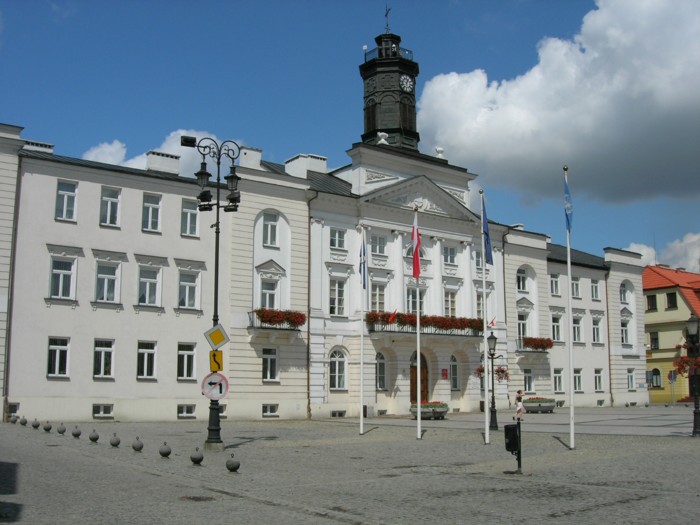
Town Hall in Płock. – Photo: Jakob Hoffmann
Distance
Population
126.061 (2010)
Location and history
Płock is located in Mazowsze County, northwest of the capital Warsaw, on the great river Wisła. Most of the city is located on the high right bank. On the left bank of the river lies the district of Radziwie.
In the Middle Ages, Płock was one of the most important administrative centers in the country. At the transition between the 11th and 12th years. the city was briefly the seat of state government and thus the de facto capital.
Płock is an academic city where about 12,000 students are enrolled in a total of 6 higher education institutions, both technical and humanistic.
Płock is also a business center dominated by one of the largest companies in Eastern and Central Europe and the largest in the fuel market in Poland, namely the oil group ORLEN SA
Płock Industrial and Technology Park is an enterprise created jointly by the city government and the PKN Orlen group with the aim of developing business in Płock and the region. In the park there are over 200 hectares available for traders. It is estimated that thousands more will find work in the park in companies in industry, technology, research and development.
Several large foreign companies have chosen to settle in Płock, thus Levi Strauss, the well-known American company that makes jeans.
In cultural life, one should mention the Płock Symphony Orchestra, which has been given a new concert hall in the music school. The Dramatic Theater moved into a modernized theater building in January 2008. Known throughout Poland is the group “Dzieci Plocka” (“The kids from Plock”, active since 1946). Also known is the singing and dancing group “Wisła” and the boys' choir “Pueri Cantores Plocenses”, created 1998.
The city also has a lot to offer the tourists: interesting building monuments and exciting museums, as well as the beautifully located zoo, sports halls, three stadiums, three swimming pools, a marina and the aeroclub's airfield (which is also planned to accommodate scheduled traffic). Furthermore, there are music festivals and fly shows as well as sailing boats on Wisła. At the river bay Sobótka – just below the old town – there is an excellent beach.
Płock is proud of his well-known handball team as well as his football team.
The high river bank of Płock is not only a beautiful place with an incomparable view of Wisła, but also a historical spot that bears testimony to the importance of the city in the past. At the Wzgórze Tumskie ridge arose the cathedral and the castle. Here, Prince Wladyslaw I Herman and Prince Boleslaw III Krzywousty (Skævmund) resided around 1200.
Archaeological studies have shown that in the 9th and 10th centuries. on the ridge, later called Wzgórze Tumskie, was found a pagan cult center. You have uncovered remains of a pagan altar built of field stones. The background for the later settlement on Wzgórze Tumskie was precisely this cult site.
Under the princes of Mieszko I and Bolesław Chrobry, Mazowsze became one of the first provinces of the new Polish state. After the introduction of Christianity, the cult center at Wzgórze Tumskie was destroyed and a settlement fortified with wood and earth violence was probably built, which was further reinforced by a double moat. It is believed that precisely this one “enclosure” (in Polish: “pLOT”) has given name to the later city. It is believed that the first stone-walled building on the site was a (no longer existing) Romanesque church, erected in the second half of the 11th century.
Between 1037 and 1047 Płock was the capital of Miecław’s independent principals.
Under Diocese (later King) Bolesław Śmiały (the Bold), in 1075 a diocese was established in Mazowsze with a diocese in Płock.
After the expulsion of Bolesław Śmiały, his brother Władysław Herman assumed power in 1079. At that time Płock became the central center of power because it was in this city that Herman had his residence. The cathedral, which was built in Płock, did not differ much from the cathedral started by Bolesław Śmiały on the Wawel mound in Kraków. In Płock, the princely Chancellor, who issued government documents, was bearing the stamp of the regent.
In 1102 Władysław Herman died in Płock, where he was also buried. The Płock government then had his sons: Zbigniew and Bolesław Krzywousty. Between 1130 and 1144 the bishop of Płock built a new cathedral.
After the Polish ruler, Boleslaw Krzywousty’s death in 1138, Mazowsze (as well as the eastern part of Kujawy), with the capital of Płock, was one of the five principals into which the country was divided. Around 1180, St. Michael's Collegiate Church in Płock was founded a school which, as the only one of the Polish schools from the Middle Ages, has continued its business to this day (is now one of the most common colleges in the city – called “Małachowianka”).
The 12th and 13th centuries. was a time of frequent attacks on the city and suffering as a result of acts of war. Thus, in 1222 and 1243, Płock was attacked from the north by the Prussians.
In 1237, the city was granted market town rights. This document – with elements of both Polish and foreign law – is preserved to this day in a document by the Bishop of Płock, Piotr I.
In response to the alliance between Mazowsze and the Crusaders followed a Lithuanian attack on Płock, led by Lithuanian prince Mendoga. In part because of Prince Ziemowit I’In the absence, the Lithuanians managed to occupy Płock, where they burned the castle and part of the city.
In the years 1351-1370, the Polish king Kazimierz was also the great prince of Płock, with the whole of Mazowsze being a county under the Polish state. He expanded the area of the city and freed it from obligations to pay various taxes. At the king's initiative, a new castle was built, surrounded by a double ring wall and a moat. The rebuilt city was surrounded by modern fortifications and access to the city was controlled at the three city gates: Dobrzyń Gate, Bielsk Gate and Wyszogród Gate.
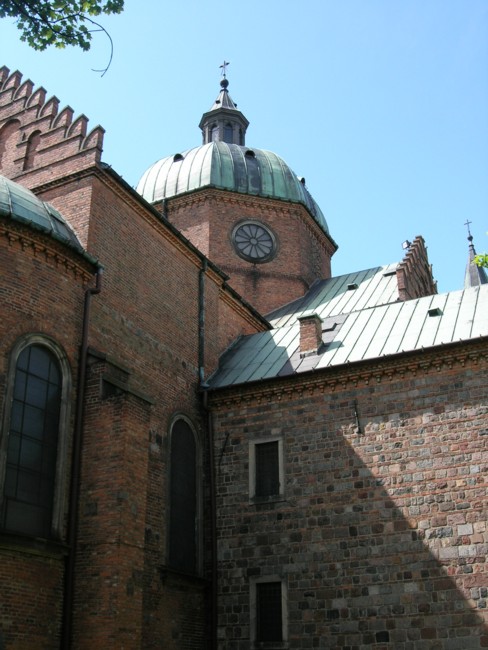
Detail from Płock Cathedral. – Photo by: Jakob Hoffmann
Ziemowit III (1370-81) and Ziemowit IV (1381-1426) were two prominent rulers of Mazowsze and Płock; Ziemowit III made his own coins with Latin inscription; Ziemowit IV married Władysław Jagiełło’Sister Aleksandra, who in 1405 founded the Holy Trinity Hospital in Płock – a hospital that still exists. During Ziemowit IV, the city established regular contacts with the University of Kraków. When the last prince of Płock, the very popular Janusz II, died in 1495, King Jan Olbracht withdrew the principality of Płock together with the entire Mazowsze under the Polish crown. From this time until the division of Poland, Płock was the capital of the county of the same name.
The 15th and 16th centuries. were favorable times for Płock. Trade flourished, among other things. carrying grain on the river to Gdańsk. In the city there were companies that made cloth and canvas; there were mills, breweries and grain stores. In the latter half of the 16th century, there were approx. 5,000 people in Płock, while the population of Warsaw was approx. 10,000 and in Krakow approx. 20,000. As a result of the privileges issued by Jan Olbracht in 1498, during the first half of the 16th century. brought a water supply to the city, which worked for many years.
In the 17th century. development started to slow down, partly as a result of increasing competition from the city of Warsaw. A fire in 1616 destroyed much of the city. As a result of epidemics in 1620’erne perished approx. 1500 people. But particularly devastating for Płock, however, was the war with the Swedes in 1656-57 and the Nordic war from 1700-1721. The acts of war, looting, and fires were a great burden, which meant considerable depopulation of the city. Only in the second half of the 18th year. it went ahead again for Płock.
After Poland's 2nd division in 1793, Płock came under Prussian rule. From the outset, Prussian dominion was characterized by a gradual but systematic Germanization. Various urban planning projects were carried out: the city wall was demolished and a number of street courses were erected in its place. A prison was built in the city.
In the time of the Polish Kingdom (“Congress Poland” 1815-32: Personnel Union with Russia) became Płock county capital. In 1820, the Scientific Society of Płock emerged, which had a significant influence on the intellectual development of the city.
Citizens of Płock participated in both the November uprising (1830-31) and the January uprising (1863-64) against Russia. The last uprising ended tragically with the execution of Zygmunt Padlewski, the rebel leader of the Płock government, on May 15, 1863. After the defeat, severe repression and rising Russification followed.
Between 1911 and 1913, the Maryvite monastery and cathedral complex was erected.
During World War I, Płock was conquered by the Germans in February 1915. However, the city was not significantly affected by the war. During the war, in 1916, the Germans built a permanent wooden bridge over Wisła for war purposes. By the end of the war, in November 1918, the citizens of Płock succeeded in disarming the German garrison in the city.
On August 18-19, 1920, the inhabitants had to defend the city against a Russian attack during the Polish-Soviet war.
In the years 1918-39, Płock was the seat of city and district authorities. In 1923, the Radziwie settlement on the left bank of the river was submerged under the town as an actual district. The rail links to Kutno and to Sierpc were connected to the steel bridge over Wisła (1937-38). However, there was a shortage of major industrial companies in the city and time was marked by stagnation and unemployment.
After the outbreak of World War II, German forces invaded Płock on September 9, 1939. The Germans immediately initiated forced removals, first and foremost of the Jewish population, but also many Polish inhabitants. People were arrested on the street and arbitrary executions took place. Arrested persons were sent to a concentration camp or to Germany on forced labor. Several buildings were demolished, especially the Jewish quarter. Ca. one third of the inhabitants fell victim to the occupation forces' terror, ie. ca. 11 thousand people (of which about 8,000 Jews). The city was liberated on 21 January 1945 by divisions of the Soviet Belarusian Front.
The city's post-war development history can be divided into two stages, before and after 1960, in which year the large petrochemical refinery was built. Płock, which first reached a population of 33,000 in 1950, ie. ca. the number who lived in the city in 1938 entered a phase of reconstruction and redevelopment, both of buildings and of economic life. Existing companies were expanded and modernized and several new ones were added. Economic growth also positively influenced the cultural life of the city.
Between 1975 and 1998, Płock was the county capital. In a 1999 merger between Petrochemia Płock SA and CPN, the Polski Group Naftowy (PKN ORLEN SA) emerged
In 2007, the Solidarność Bridge was commissioned. In 2011, the pier at Wisła was taken into use.
Tourist attractions
Selected attractions:
The former princely castle / The former Benedictine monastery
The Castle of the Masovian Princes in Płock is a Gothic building erected by King Kazimierz the Great. The castle was the seat of the princes of Mazowsze until the end of the 15th century.
Archaeological studies indicate the presence of a settlement at this site in the 10th century. A reason for constructing a fortified settlement here was a favorable location in relation to the current trade routes as well as the steep river slope (between 40 and 50 meters above the river's water level). In the beginning, these were wood and earth fortifications; Inside the fort was a small castle building. The largest development of the settlement took place in Władysław Herman’s reign where the Romanesque Cathedral and at least two other ground-walled buildings were erected in the area. Instead of the Romanesque palatium (ie the building in the castle intended for residential purposes) from the 12th-13th century. Kazimierz the Great built a Gothic castle three hundred years later, surrounded by a double ring wall. The inner wall connected two towers that have been preserved to this day: Wieża Schlachecka and Wieża Zegarowa (Noble Tower and Clock Tower). The residential building was built with the ring wall. You entered the castle area through two gates: one – to the southwest, at the river bank – had a small gate building, which was connected by a wooden bridge connecting the castle with the city wall; the second gate – to the northwest – turned in the direction of the city gate Grodzka. The noble tower was erected ca. 1353. The bell tower, which from the end of the 15th century. served as a bell tower for the cathedral, was rebuilt in the middle of the 16th century. The castle was the residence of the Masovian princes until the end of the 15th century. In 1532, a landslide took place in the steep river bank, which destroyed part of the castle. After the redevelopment, the residence was moved to the southern part of the site, while the now abandoned part was taken over by the Benedictine Order in 1538. The Baroque-style monastery that arose in that way changed the appearance of the castle. The excavated remains of Władysław Herman and his descendants' residence, the two preserved towers of the Gothic castle as well as the buildings of the former Benedictine monastery are included in the register of protected building monuments.
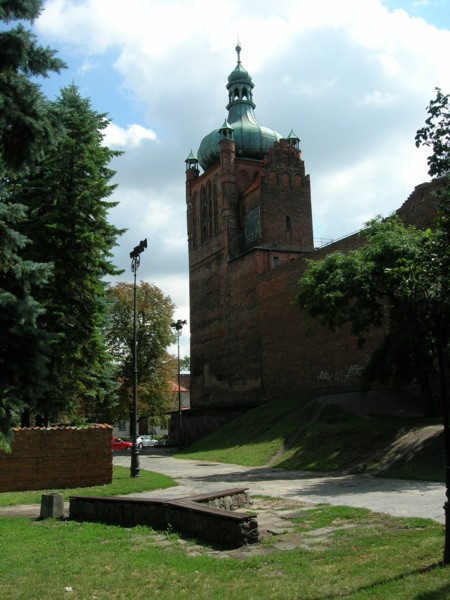
Plock. The castle with the Clock Tower seen from the northwest. – Photo: Jakob Hoffmann
The cathedral . Virgin Mary's Church of the Assumption (Cathedral)
After the diocese's establishment in 1075, the first ground-walled cathedral was built on the site of an even older church. This cathedral was destroyed in the attack of the Pomerans in 1127. Then a new, monumental cathedral was built on the same site by Bishop Alexander of Malonne and consecrated (to the Virgin Mary) in 1144. It was a Romanesque, three-vessel basilica with an apse, who finished the chorus and the arms of the transshipment; The building was erected by meticulously carved quarry and was the largest church in Poland at the time of construction. The original bronze doors that belonged to the Romanesque church's main entrance are now found in the west portal of Sophia Church in Veliky Novgorod, Russia. They were manufactured in a workshop in Magdeburg around 1150. The Cathedral of Płock now has a copy of these doors, made in the 1980s. In the royal chapel on the north side of the church is a marble sarcophagus in which two Polish rulers, Władysław I Herman and his son Bolesław III Krzywousty, are buried. Immediately after a major fire in 1530, the building was rebuilt by Bishop Andrzej Krzycki in Renaissance style. It was the first large cathedral in Poland of this style; During the conversion, the quarry stones from the Romanesque basilica were largely recycled. The architects were three Italians: Bernardino de Gianotis, Giovanni Cini da Siena and Filippo da Fiesole. Two renaissance basilicas in Rome were chosen as the basic pattern for the new cathedral. However, the exterior architecture is more reminiscent of the northern Italian brick churches and partly of the local Gothic churches in Mazowsze. This may be the result of a further redevelopment around 1560 by Giovanni Battista of Venice, who added the large choir and two towers to the west. The building was renovated in 1903, in which connection the current appearance of the west facade and towers was created by the architect Stefan Szyller.
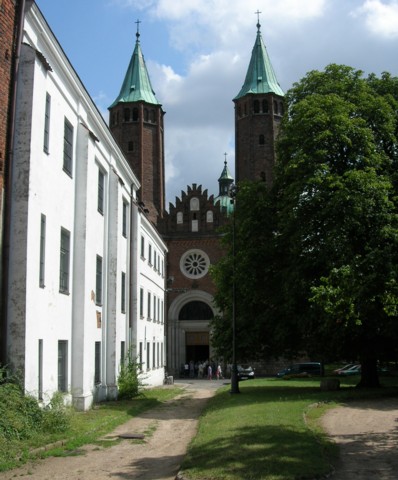
Plock. Along the south wall of the castle you can see the west facade of the cathedral. – Photo: Jakob Hoffmann
Amphitheater in Płock
The Płock Amphitheater is located on the Wisła riverfront. It was originally a work by three architects from Płock and it was built in 1960’s. The overall management of the project was undertaken by the Płock Bridge Construction Company. The finished building had room for approx. 3000 spectators and served its purpose for 40 years. At the beginning of the 21st century. the idea arose to redevelop the old and worn-out construction. Among several projects, an idea was chosen by Wojciech Ryzyński and Henryk Nowacki. Completely modernized and virtually built from new, the new amphitheater was divided into 14 sectors with a total of 3,503 spectator seats. The theater is covered by a fan-shaped stretched roof. The building was completed in the spring of 2007. At the last minute, however, it was clear that a further reinforcement of the construction pylons was required. After that, construction work could finally be completed in June 2008. The first major event in the theater was the awarding of Miss Poland 2008, which was broadcast live and nationwide by the TV station Polsat.
The street ulica Tumska
Ulica Tumska is one of the main streets of the old town of Płock. In 1970’it was still accessible to car traffic – now it is the city's main pedestrian street and main street. The street (which is 326 m long) runs from Wzgórze Tumskie by the river in a northerly direction up to Nowy Rynek (Nytorv). The building consists mainly of 2- and 3-storey residential houses with various shops on the lower floor. In 2006, a renovation of the street, now covered with cobblestones and granite slabs, was completed. Along and near the pedestrian street are several important buildings and institutions: the Cathedral, the Diocesan Museum, the former Benedictine monastery, the headquarters of the Scientific Society of Płock, the Masovian Museum and others.
The Masovian Museum (Muzeum Mazowieckie)
This regional museum in Płock, founded in 1820 by an amalgamation of the collections of the Scientific Society of Płock and the county school, is one of the oldest institutions of this type in Poland. Between 1912 and 1971, the museum was housed in the buildings belonging to the Scientific Society of Płock. From 2005 the museum is located in a beautifully renovated house on Tumska street no.8 in the old town. The museum also has an ethnographic department in an old, storied building by the river. In total there are the following collections in the museum: Art, history, archeology, numismatics and – as mentioned before – ethnography.
President of the Stanisław Małachowski High School (Liceum Ogólnokształcące im. Marszałka Stanisława Małachowskiego w Płocku)
This is one of the oldest schools in Poland, having been founded in 1180. It is now a general high school.
City Hall (Ratusz)
is located at Stary Rynek (Gammeltorv) No.1.
It is a three-story, classicist building built in 1827 by architect Jakub Kubicki. It is one of the most beautiful examples of buildings in this style of Mazowsze. However, the octagonal tower deviates stylistically from the facade, being a later added element. It is the seat of the city authorities, which the building has been on ever since it was built.
Before the construction of the current town hall building, a Gothic town hall from the 15th century was located centrally in the square.
Stary Rynek (Old Square)
The square is one of the most important squares in the old town with buildings from the 18th and 19th centuries in particular. At Gammeltorv is the town hall from 1827.
In the past, there was even more life on the square than there is today, as it was the city's traditional marketplace. Formerly the town hall stood in the middle of the square; in the basement there was jail. In front of the town hall stood the scaffold (execution site). From the square, streets were facing the city's three city gates. The main street Grodzka led to the castle. In 1877 the marketplace was moved to Nowy Rynek (Nytorv).
Stary Rynek was modernized in the year 2000.
In Płock there are 2 bridges over the Wisła River: Most im. Legionów Piłsudskiego and Most Solidarności:
The Piłsudski Legions Bridge
This one, the oldest of the two bridges over Wisła, is a road and rail bridge connecting the old town to the Radziwie neighborhood on the left bank. The length is 690 m. The bridge was built in 1937-38 as an iron bridge. which rests on 8 concrete pellets. Typically, it is a grid bridge.
In September 1939, two bridges were destroyed by the Polish army. The bridge was rebuilt in 1943 by the German occupation forces. In January 1945, 60% of the bridge was blown up by the Germans in connection with their withdrawal. After that, the city was without a functioning bridge (only 2 bridge subjects remained). In the period until the reconstruction of the bridge in June 1950, a transit system in the form of the ships Smolka and Wodnik had to be organized, as well as pontoon bridges and sometimes other boats.
The Piłsudski Legions Bridge is a special construction in that the height difference between the two bridge heads is 8 meters, so that the transition increases from the low left bank of Radziwie to the high slope on the right bank. Therefore, each bridge subject is different and designed individually. The bridge construction took about 2 years and was undertaken by two companies, who started work from different banks and met in the middle. The bridge was renovated in 1979 and again in 1994. In 2008, the lighting on the bridge was replaced, so that the bridge's grid supports now appear in three colors – the city's colors – namely blue, red and beige.
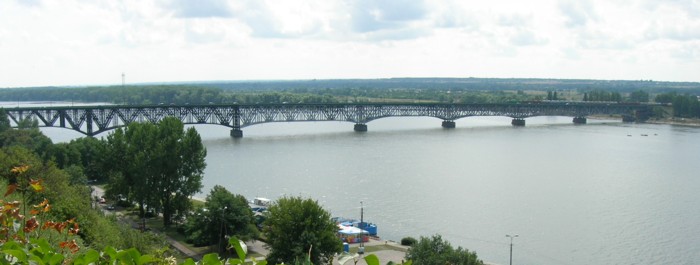
Plock. Railway bridge over Wisła. – Photo: Jakob Hoffmann
Solidarity Bridge (Most Solidarności)
This steel bridge was built between 2002 and 2007 and is typically an oblique roof bridge; i.e. that the bridge deck is carried directly by inclined cables suspended over the pylons. The bridge has 4 lanes for car traffic as well as a bike path and a pedestrian sidewalk. The total length is 1712 meters and the width is 27.5 meters. By road, the bridge is a continuation to the north of the main roads Nos. 60 and 62, which meet south of the river in the Radziwie district.
The bridge consists of three parts: the access bridge on the left river bank, the central suspended part with a length of 615 m. And the access bridge on the right river bank. The cables on the suspended part of the bridge are carried by 2 pylons (towers) with a height of just under 64 m. The main span of the bridge is 375 m. This is the longest in Poland. The free height under the bridge is 12 meters at normal water level.
The mill in Płock
The pier – which is part of the marina – is a steel structure with a length of 358 meters. It extends from the right bank into an arch into the river in a westerly direction. The width of the mill is 5.3 meters; however, at the end of the pier, where a restaurant with a circular floor plan is arranged, the width is 15.3 meters. It is characteristic that the pier goes parallel to the river bank; it is the only pier of that type in Poland. This location in the river makes the pier less vulnerable to ice formation in the winter while offering from the pier an optimal view of the steep right bank of the beautiful protected buildings: the cathedral, the castle and others. in the old city as well as the modern amphitheater. To the south one looks towards the left bank of the river with the district of Radziwie and the river port – which, incidentally, occurred in 1927. To the east is seen the bridge of the Piłsudski legions, illuminated at night. To the west, in the evening, you can see the sunset over the wide water level – over 1 km wide – as the river passes through Płock and up to Włocławek the artificial Włocławek lake.
To the east, the pier now borders the basin in the marina, which can accommodate approx. 100 boats. To the west, the end of the pier marks the entrance to the harbor. There is free access to the pier throughout the year. The mill is also available for wheelchair users.
The construction of the pier lasted from March 2010 to December 2010 and the inauguration took place in June 2011.
Cathedral of the Virgin Mary : Church of Mercy and Love
The Order of Mary was founded in 1887 by a Catholic nun in Poland. From 1906, the order constituted an actual church direction (the Old Catholic Church of the Virgin Mary), independent of Rome. This church building was erected in 1911-14. In addition to the church itself, the complex includes a monastery building as well as the church of St. Mary's Church. The church and monastery are built in English neo-Gothic style with a basic form like the letter E.
Saint Bartholomew’ Church
This church, which stands near the town hall, was originally consecrated in 1356. It was a Gothic church building during its construction, but was later changed to Renaissance and later Baroque style. The latest rebuild – in the 18th century. – was necessary because of a downfall of part of the river slope, which severely damaged the building. The church's ornament is an early Baroque style altar, dated 1640.
Broniewski Memorial
Near Wladyslaw Broniewski’s home stands a memorial to this locally born poet. The artwork was done in bronze in 1972 by sculptor Gustaw Zemła.
synagogue
Mala Synagoga is located at ul.Kwiatka 7. It is the only preserved independent synagogue in the former Płock county.
Famous people associated with Płock:
Tadeusz Mazowiecki , b. 1927 in Płock. Politician, writer and journalist. From August 1989 to December 1990 he was Polish Prime Minister.
Wladyslaw Broniewski , b. 1897 in Płock, 1962 in Warsaw. Polish poet; a significant representative of revolutionary lyricism and socialist realism in Poland.
Surrounding Area
The area is marked partly by the river valley and partly by the nearby landscape park. Between Płock and Włocławek, the river runs through Lake Włocławek, built in 1970 by the construction of a dam in Włocławek. The purpose of the artificial lake is to reduce the risk of flooding, to generate energy through the Włocławek hydroelectric plant and to support tourism in the creation of tourist facilities in small towns along the lake shores. Gostynin-Włocławek Landscape Park has extensive woodland and several beautiful small lakes. The river and the reservoir create all kinds of possibilities for fishing, swimming and any kind of water sports. In the forests you can take long walks and enjoy the nature and possibly take advantage of the opportunities for agrotourism (farm holidays) offered in the area. The district is an agricultural area with many organic growers of vegetables and fruits.
In the Wisla River, approx. 4 km southeast of the city center, lies a rather large island, Kępa Osnicka (Osnica Island). In 1930’there were 7 farms on the island, but after the Second World War the island has been abandoned, so that it is now completely uninhabited.
Accommodation
Other accommodation links:
Plock (The official site of the city – in Polish, English and German) – in Polish, English and German
Eating Out:
Plock (The official site of the city – in Polish, English and German) – in Polish, English and German
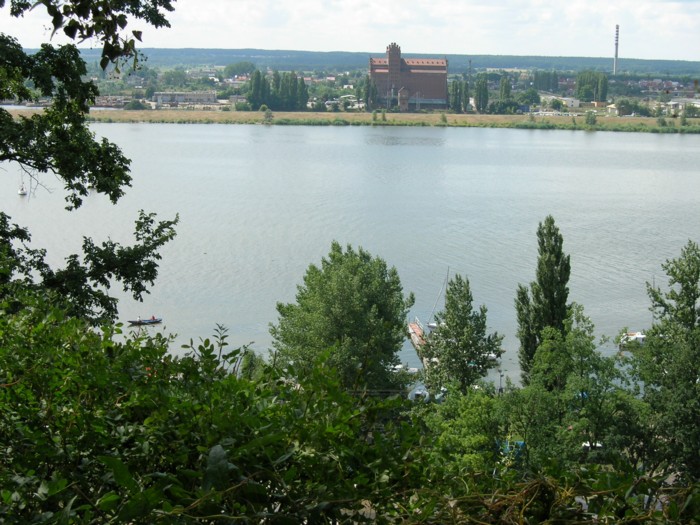
Plock. View of the river Wisła towards the left bank of the river and the district of Radziwie. Centrally located is the large warehouse at the river port. Photo: Jakob Hoffmann
Other Internet sites and sources
Plock (The official site of the city – in Polish, English and German) – in Polish, English and German
Translated into English by Google Translate. Spangshus.dk accept no liability for any errors or omissions in translation.
Map
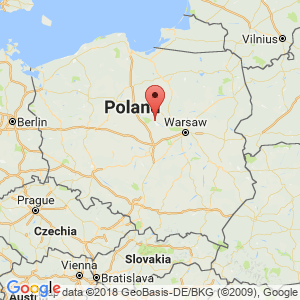
Rating
Search
Most used tags
churches (205) Castles (86) Monasteries (79) Town walls (74) Lakes (71) Town halls (67) Rivers (65) Castles1 (62) Mansions (55) Museums (51) Regional museums (38) Town gates (36) Abbey churches (35) Castle ruins (30) Cathedrals (26) Forests (25) Health resorts (24) Water sports (23) Mounds (23) National parks (22)Click for all tags
Denne side er også tilgængelig på dansk. This page and contents is (c) Copyright 2018- www.spangshus.dk. Based on Inviator software by ISCA Software